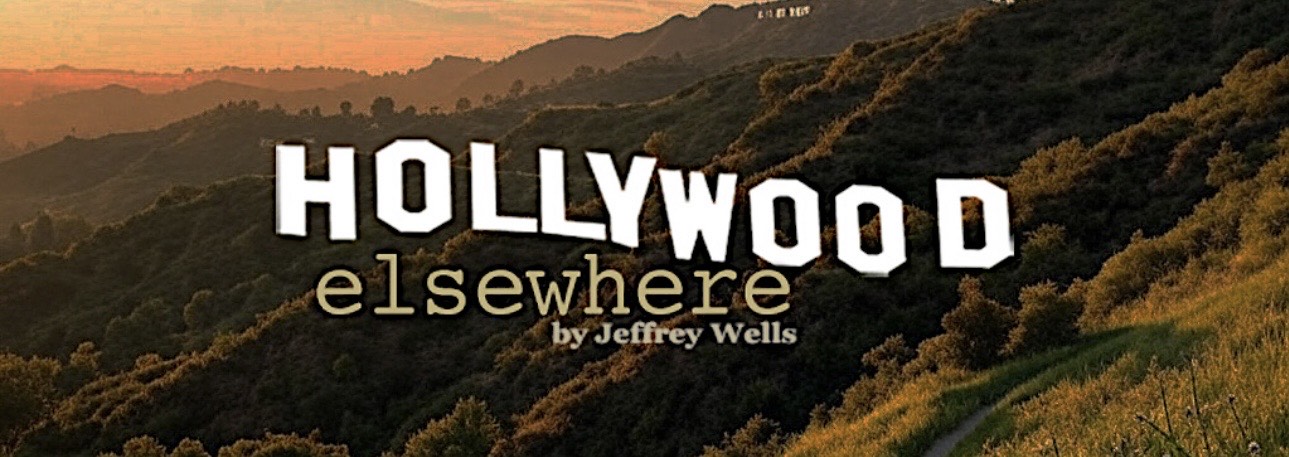About a year ago 20th Century Fox’s UK video arm issued a superbly mastered Bluray of Joseph L. Mankiwewicz‘s Cleopatra. They called it a 50th anniversary edition when in fact it celebrated the film’s 49th year, as it opened on 6.12.63. I said in my 2.5.12 review that “if you can somehow make yourself ignore the elephantine, glacially-paced, dialogue-driven nature and just focus on the lavish Todd-AO splendor and large-format clarity, it’s a nice high-def bath.”
And now Fox Home Video is announcing that their version (i.e., the exact same Bluray with exact same extras) is coming out on 5.21.13 with a different cover.
What am I missing? Except for Amoeba and Best Buy and Walmart and other big chains retail purchasings of Blurays are no more. If you want to buy a Bluray you order it online, period. Which is what I did when the British version came out. What’s different when it comes to ordering the U.S. version? The British Bluray is slightly cheaper, going for about $12 U.S. while the limited U.S. book version is selling for about $18 bills and the domestic limited two-disc Bluray is $13.
The original roadshow version of Cleopatra (i.e., the version on both Blurays) runs 243 minutes but it’s actually 251 minutes with overture, entr’acte and exit music. The full-boat 243-minute version is the only way to suffer through this thing.
I shouldn’t have used the word “nice” in my initial review — that makes it sound just okay. The British Bluray is visually magnificent, sumptuous. It’s a long, highly colorful, super-detailed chocolate sundae. I wrote last year that “I can watch stodgy big-studio films if they were shot by seasoned pros (i.e., Leon Shamroy) on expensive large-format stock. I have that skill, that knack. I shut my mind off and meditate on the resolution and the tonalities and push the other stuff aside.”
Cleopatra is essentially a three-character piece (Elizabeth Taylor‘s Cleopatra, Rex Harrison‘s Julius Caesar, and Richard Burton‘s Marc Antony). The big poster was originally painted with just Taylor and Burton. This prompted Harrison to complain and insist that he be included, and so the poster was altered [see below]. Now the jacket cover of the U.S. Bluray has eliminated Harrison again.
In his 2.26.12 review, Bluray.com’s Dr. Svet Atanasov called Cleopatra‘s high-definition transfer “enormously impressive. Detail, clarity, and especially image depth easily rival those of the outstanding Bluray release of William Wyler‘s Ben-Hur, which Warner Brothers produced last year. The massive panoramic scenes also look incredibly fluid. If you have the ability to project your Blurays on large screens, prepare to be overwhelmed by the stunning visuals.
“There are absolutely no traces of problematic de-noising or sharpening corrections. Unsurprisingly, when blown through a digital projector Cleopatra very much looks like film, boasting organic qualities that are typically extremely easy to appreciate if an older film has undergone a meticulous restoration and lab technicians have not tried to ‘modernize’ it.”
On 4.11.10 I wrote the following: “The rap against Cleopatra is that it’s stately, slow-moving, oppressively talky, etc. But the opening credits — black font, a series of faded wall paintings, Alex North‘s music — are arresting, and then fascinating during a 20-second passage. North’s score slips into a somber mood and then builds into slight fanfare as the final painting becomes more and more vivid in stages, and finally transitions into 70mm live action.
“There’s a portion of ten or twelve minutes after the credits with Rex Harrison and Martin Landau and the rest that’s fairly efficient, and then — about 16 or 17 minutes in — Elizabeth Taylor arrives, and the film soon becomes draggy, and then tedious, and then suffocating.”
Read more





